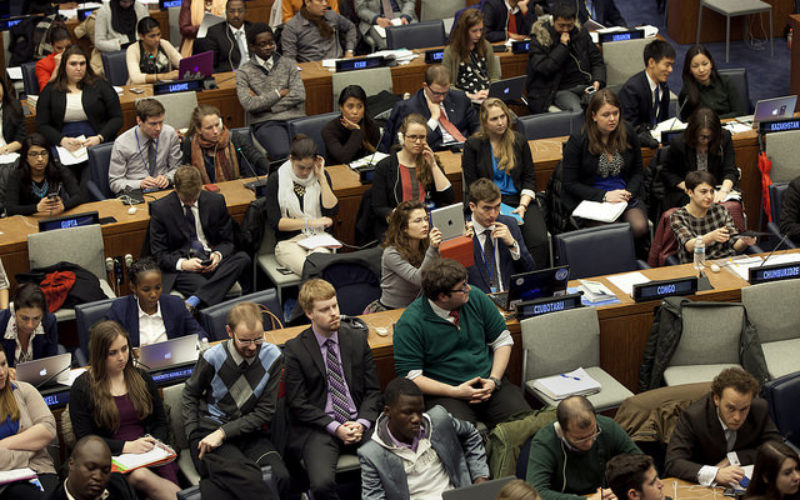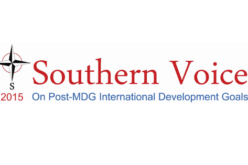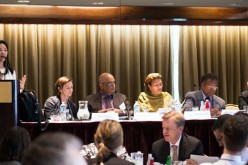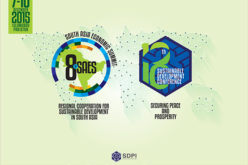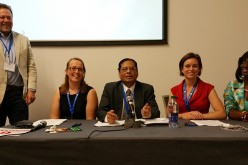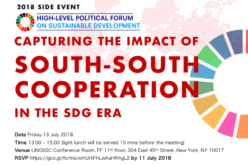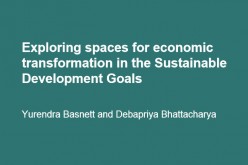by Dr. Debapriya Bhattacharya & Sarah Sabin Khan, Centre for Policy Dialogue (CPD)
This is the first of a series of articles of Southern Voice’s new programme on development effectiveness. The programme seeks to build the conversation from the bottom up. The aim is to complement various streams of policy dialogue in order to understand development effectiveness in the current context. This includes the Global Partnership for Effective Development Cooperation (GPEDC) and South South Cooperation (SSC). The following article summarises the key reasons why rethinking development effectiveness is critical at this time.
Discourse on effectiveness of external public development finance flows is currently at an inflection point. The development landscape has undergone dramatic shifts since the international community first agreed in Paris in 2005 on a set of principles for assessing the effectiveness of aid flows. The discussion subsequently evolved during the Accra (2008) and Busan (2011) high level fora from aid effectiveness to a broader understanding of development effectiveness. Concurrently, a plethora of actors make available a wider set of development finance instruments to developing countries. Changing incentive structures – at various domains and levels – are also significantly refashioning the allocation and composition of external development assistance. , Moreover, the launch of the Sustainable Development Goals (SDGs) make new demands on the effective use of these resources. Providers must put front and center the ambitious objective of “leave no one behind” which demands addressing the increasingly diverse contextual realities in the recipient countries.
A changing landscape in the recipient countries
The profile of the developing countries is changing. A significant number of them are in the process of graduating out of the least developed countries (LDC) group. Most of the countries belonging to the group of low-income counties are moving up to the lower middle-income strata. The contextual variations among these countries are also quite substantive. But also the number of fragile and conflict affected states is on the rise. Consequently, there is fear that the distinctions among development, humanitarian and security assistance may get blurred. The changing profile of the potential recipient of external assistance is not only underpinning the allocative decisions of the providers of development assistance. It is also prompting them to revisit the issues related to development effectiveness of development finance.
The dilemma of traditional providers to redefine their cooperation strategies
Flow of bilateral official development assistance (ODA) from the OECD countries is going through a challenging time. Certain provider countries are redefining the strategic and political objectives of their aid programme. With unveiling of new global priorities, such as cross-border migration, resources are being diverted from the recipient countries to in-country use by the providers. The not so encouraging state of the world economy is also holding back ODA providers. As a result, fulfilment of the commitment by OECD countries of channelling 0.7 % of GNI will not be possible. This means that all actors involved need to learn to do more with less.
“Non-traditional” providers create new opportunities
New opportunities to look beyond ODA from OECD countries are emerging. An increasing number of Southern countries are engaging in activities related to international development cooperation, i.e. South-South cooperation (SSC). However, these “non-traditional” providers go beyond financing. They pursue a large variety of operational modalities while delivering their development assistance. Hence the importance of designing an assessment framework for the inputs sourced from Southern providers.
Private philanthropy is another “non-traditional” development assistance provider that is increasingly making itself felt. The emergence of non-state actors in the traditional domain of international development cooperation has created new challenges in articulating parameters of effectiveness.
Innovative financial instruments
With increasing demands for additional resources for implementation of SDGs, efforts to tap innovative sources of development finance are gathering steam. Among the new instruments, blended finance is getting traction. It uses concessional external finance to leverage private investment. However, there are calls for caution that public funds should not be used to underwrite private gains. Using these forms of development finance demands revisiting the concept of development effectiveness and its applications.
Moving from a focus on processes to outcomes
The changing landscape of development finance has important implications for the frameworks for assessing its principles, processes and the outcomes. Current frameworks have been more focused on processes dealing with issues related to alignment and harmonisation, transparency and accountability. The focus on development outcomes and impact seems to get eluded along the way. Thus, a more holistic approach to development has to evolve. This can be done through a synergistic interfacing of parameters of effective development outcomes and effectiveness of development cooperation.
New data sources and the data revolution
Availability of and access to aid related data has been a long-standing issue, particularly concerning “non-traditional” providers and innovative instruments. There has always been a discrepancy between figures relating to country programmable aid and actual ODA disbursed. Admittedly, discernible progress has been achieved in harmonising and collating aid data, particularly in light of the unfolding Data Revolution. Now, thanks to the emergence of new and innovative data sources (e.g. big data from cell phone companies and geospatial data from satellite imagery), there are opportunities to assess the new dimensions of effectiveness of development cooperation.
State of global financial architecture
The importance of results, mutual accountability, and recipient country-specific perspectives are increasingly getting highlighted, particularly in the advent of the Global Partnership for Effective Development Cooperation (GPEDC) in Busan (2011). Following years of dwindling aid flows, recipient countries have become more aware about effectiveness of development cooperation. Southern providers are also recognising that they will have to engage in a discourse aimed at developing a system of global scrutiny of its aid deliveries. While a number of big Southern providers are yet to align with the process, there have been independent efforts towards channelling South-South cooperation towards more effective cooperation and feasible development outcomes.
Nonetheless, the development effectiveness agenda is yet to have a definitive universal framework or reach a global consensus point. There is an urgent need for a shared understanding of the principles, processes and outcomes of development effectiveness.
The eroding political momentum on the debates of effectiveness
It is maintained that the aid effectiveness initiative remains an unfinished business. Despite being technically sound, it lacks necessary political ownership on the part of both providers and recipients. The development effectiveness agenda faces similar challenges. The GPEDC is exposed to the risk of losing political momentum. The chance to discuss a universal agenda in development effectiveness is almost absent. Thus the need for a revamped conversation, one that builds up from the ground, based on evidence and recipient country perspectives. This is crucial to stir enough political interest to take the agenda forward.
A Southern response is needed
So far, debates have focused on the provider’s side of the equation. Perspectives from recipient countries, particularly from the Global South, have been inconspicuous in the discussions on development effectiveness of development cooperation. That is why Southern Voice has taken up the task of rebuilding the dialogue from the bottom, based on Southern perspectives from recipient countries on development effectiveness.
About the programme:
The Development Effectiveness programme is currently at the inception phase. It is carrying out four streams of research to inform a methodological framework that can be applied at the country level in the next phase. The first set of knowledge products are expected to be available in January 2019. For this project, the Southern Voice network is working in partnership with the Centre for Policy Dialogue (CPD), with support from the Bill and Melinda Gates Foundation.
About the authors:
Dr. Bhattacharya is the Team Leader of the Development Effectiveness Programme and the Chair of Southern Voice. Dr Bhattacharya is a macroeconomist and public policy analyst, and currently a Distinguished Fellow at the Centre for Policy Dialogue (CPD), Dhaka. He has published extensively on pro-poor macroeconomics, development challenges of the LDCs and issues related to Sustainable Development Goals (SDGs).
Sarah Sabin Khan is a researcher for the Development effectiveness programme. She is a Senior Research Associate at the Centre for Policy Dialogue (CPD).
The Centre for Policy Dialogue (CPD) is a civil society think tank that seeks to foster a more participatory and accountable development process in Bangladesh. CPD’s research agenda covers a wide variety of areas including macroeconomic analysis, agricultural and rural development, trade, investment promotion, and climate change.
2,415 total views, 4 views today


